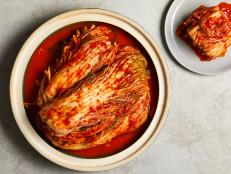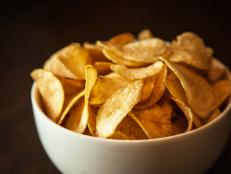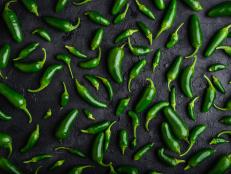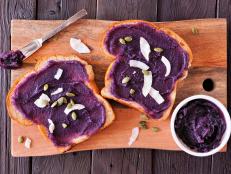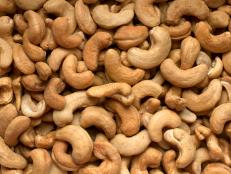Guide to Winter Vegetables
Kale
This sturdy member of the cabbage family is excellent when braised, since the heat and liquid breaks down the woody texture, but the small raw leaves can also be delightful when tossed in a salad. Serve kale stewed, sautéed or boiled for a nutrient-packed side dish. When purchasing it, look for bunches with dark green leaves (they may have hints of purple or blue coloring) and sturdy stems and leaves. Avoid bunches with yellowing leaves and limp stems. Keep kale cold until you are ready to cook. For the freshest flavor and texture, don’t store kale longer than a week in the fridge. As kale ages, it develops a stronger flavor.
Try:
Radicchio
This bitter lettuce, a type of Italian chicory, is prized for its versatility, color and taste. Radicchio is excellent quartered, grilled and drizzled with a little balsamic vinegar and olive oil, and is delicious when added to a salad of mixed greens. Look for small, brightly colored, tight heads without blemishes. Store radicchio in a plastic bag in the refrigerator for up to a week.
Try:
Radishes
Radishes are root vegetables with a peppery bite. They are round or oblong, and can be white, red, purple, black or even green with a pink center. It has been recorded that this little veggie has been serving up heat since pre-historic times. The addition of grated or sliced radish works well in many cold salads as well as in hors d’oeuvres. Another variety growing in popularity is the Oriental radish, also known as the daikon, which is grated and served with sushi. Although radishes are usually eaten raw in the United States, try sautéing, braising or steaming them for an attractive and delicious side dish.
It's best to buy radishes with the green tops still attached to ensure freshness. As soon as you get them home, remove the tops (you can chop them up and toss them in salads) and store the radishes in the refrigerator for up to two weeks.
Try:
Rutabaga
If the rutabaga wasn't a childhood favorite, you should consider giving this hardy root vegetable a second chance. It has a slightly stronger flavor than a turnip, with a light peppery bite, and is believed to be a hybrid of the turnip and cabbage. Europeans call this vegetable a Swede or a Swedish turnip; in the U.S. it is often referred to as a yellow turnip. Under the thin skin, rutabagas have a yellowish-orange flesh that becomes even more intense when cooked. Blanching a peeled and cut rutabaga for about five minutes before adding it to a dish will minimize its assertive flavor. Also, to keep the flavor mild, take care not to overcook it.
Rutabagas are usually sold with a wax coating over the skin (which must be peeled before cooking) to prevent moisture loss. Look for smaller rutabagas (the sweeter ones are less than four inches in diameter) with smooth unblemished skin. Rutabagas make for a great, simple side dish when mashed with fresh butter and salt, and are excellent added to soups and stews.
Rutabagas will last about two weeks in the fridge and one week at room temperature.
Try:
Turnips
The turnip, in peak season from October through March, makes a perfect addition to any side of roasted vegetables or hearty winter stew with its mustard-like bite. Arabs prefer to pickle turnips, the Chinese sun-dry them and preserve them in soy sauce, while the French pick them young and tender and serve them braised or sautéed. In the spring, look for baby turnips, which are milder and wonderful braised.
Buy turnips with tops if possible — it's a guarantee of freshness. Remove the tops as soon as you get home and store them separately. The cooked tops make a great side-dish packed with nutrients. Look for smaller turnips, preferably less than three inches in diameter; the larger ones tend to get woody and have a stronger flavor. There is no need to peel the smaller turnips, but the older ones will have a tougher skin and are best peeled. Refrigerate turnips in a plastic bag for up to 1 week
Try:
Chives
These dainty, hollowed green stems are the most mild flavored of all the onion family. Chive plants can be snipped with scissors and will re-grow where you cut them, making for a great addition to your herb garden from the spring all the way through the fall. They are a lovely garnish when thinly sliced, and both the chive stem and the gorgeous lavender-hued buds work well in salads. The chive's delicate flavor can be lost during the cooking process, so chives are best showcased when added to a dish right before serving. Store fresh chives in a plastic bag in your fridge for up to a week. Don't wash them until right before use or they get slimy.
Try:
































